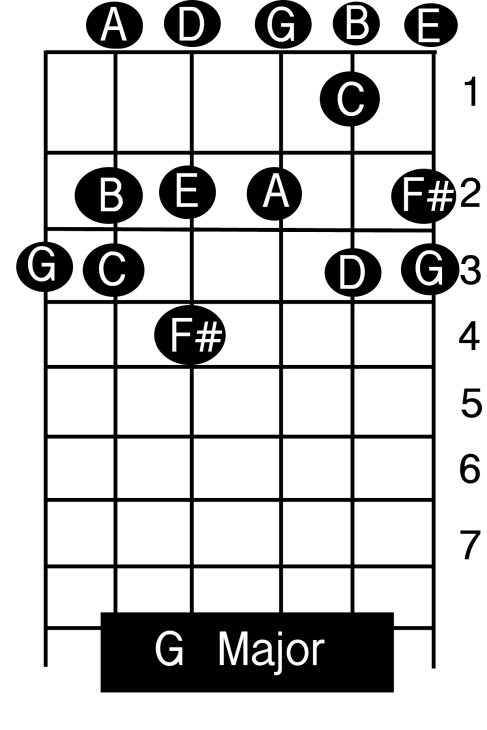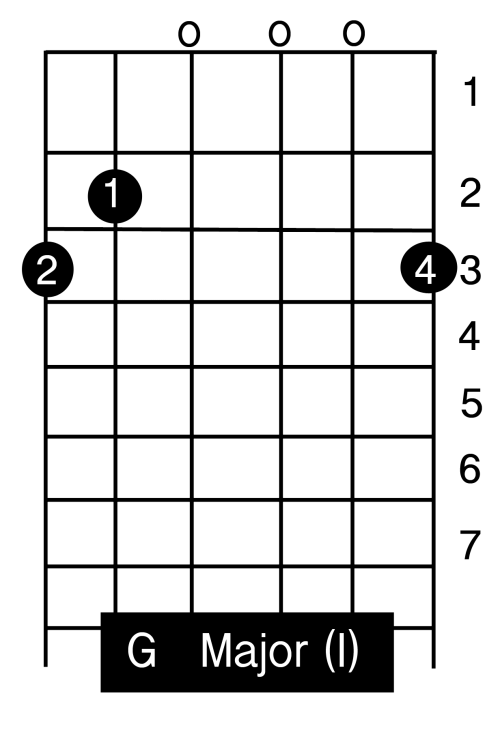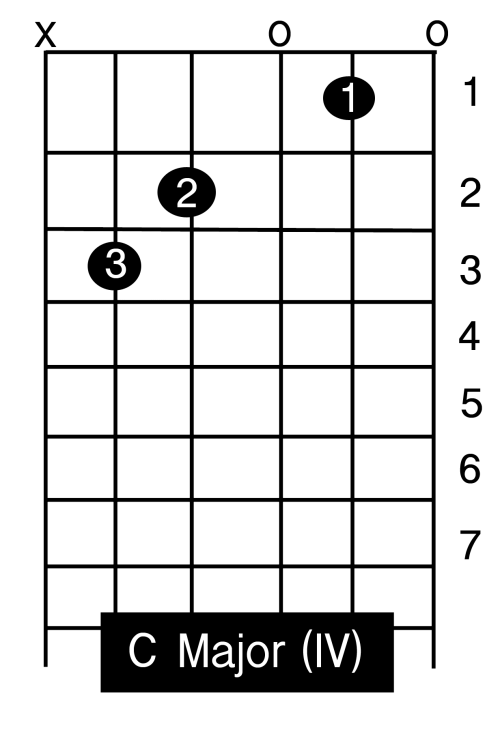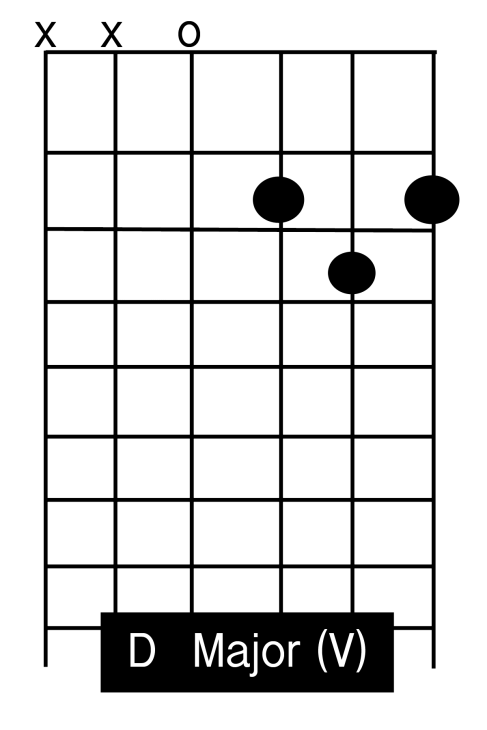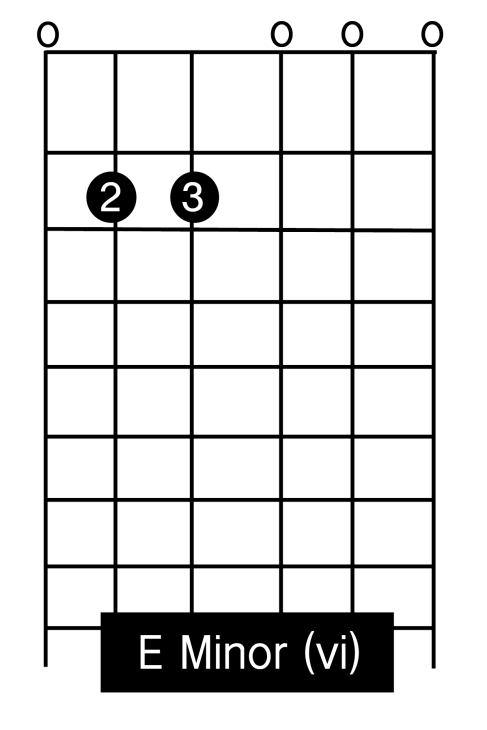G Major – The Key, Chords and Scale of G Major.
This is the companion post to the video: Electric Guitar 104 – G Major on my YouTube channel http://www.youtube.com/lessonswithcameron
In this post, I want to cover one of the more common keys in songs played on the guitar. Because of the way the guitar strings are laid out, the instrument lends itself perfectly to keys like G, Em, Am, A, D, and E. For this reason, you’ll see a large majority of songs written on guitar being in those keys. So, with that in mind, we are going to explore G Major. (Remember, all major keys are built in the same way, so the relationships between the chords and notes is true for all major keys. If you see it, great. If it isn’t apparent to you, prepare to learn each key individually until it becomes clear.)
Definitions. For the purpose of this post, I’m going to use three words and I’d like to define the way I will be using them here. (These are shortened definitions, as the terms have much deeper meanings.)
Scale: A series of notes defined by their whole step and half step intervals.
Chord: 3 or more notes played together. In this case, each chord will be made using every other note in the scale.
Key: A series of chords based on a scale.
The Key of G uses the scale G Major (G A B C D E F# G) and the chords G Am Bm C D Em F#m7(b5) G.
The major scale is made using a series of whole steps and half steps. We can break the scale up into two halves called “tetrachords”. Each tetrachord of a major scale is Whole Step, Whole Step, Half Step. A major scale is made by joining two tetrachords with a Whole Step. Using these intervals, the major scale is made of these intervals:
1 W 2 W 3 H 4 W 5 W 6 W 7 H 1
If we explore this from the G string, we can find these notes on the following frets:
0 – 2 – 4 – 5 – 7 – 9 – 11 – 12 These notes are G A B C D E F# G.
By moving over to the next string every four or five frets, you can play a Major Scale in one position without moving your hand up and down the neck. The following diagram shows two octaves of the G Major scale in the first position using open strings. Use your index finger on any notes on the first fret, your middle finger on any second fret notes, your ring finger on all third fret notes and your pinky for the note on the fourth fret, fourth string.
Each note in the scale is represented by a chord. These are the majority of chords you’ll find in song that is in a certain key, which is why it is useful to know your keys. This means you will be able to learn songs quickly by only having to learn the sequence of chords, instead of memorizing a new set of chords each time and not being sure what to expect.
Triads: The basic set of chords in a key are called triads. They are made using two notes that are a third apart (1 and 3, in this case G and B) and a third note that is a third above the 3. (The 5th note from the 1). We call these notes a triad. (1-3-5).
Triads are built on thirds, so it’s important to understand what thirds are and how they work. There are two basic kinds of thirds: Major and Minor. Major Thirds are 2 whole steps (4 half steps), and Minor Thirds are 1 1/2 whole steps (3 half steps).
There are four types of triads: Major, Minor, Augmented and Diminished. Each of the four types of triads are built by stacking the two different kinds of thirds.
Major Triad (M): Major 3rd + Minor 3rd
Minor Triad (m): Minor 3rd + Major 3rd
Augmented Triad (+): Major 3rd + Major 3rd
Diminished Triad (dim): Minor 3rd + Minor 3rd
Starting from the Root Note of the key of G, we are going to take every other note from the scale to build our first triad. 1=G 3=B 5=D. (G1 A2 B3 C4 D5 E6 F#7). If we measure the distance from G to B, we find it is 2 steps. The distance from B to D is 1 1/2 steps. This combination of Major 3rd (M3) and Minor 3rd (m3) makes a Major chord. This would then define the first chord of the key (I) as G Major. We could then go to the second note of the scale “A” and repeat the process. This gives us the notes 2=A 4=C 6=E. Measuring A-C-E, we find the pattern m3+M3. This identifies a minor chord, so the 2nd chord of the key (ii) is “A Minor” or Am. You can repeat this process through the scale. I recommend doing it on paper and discover what is contained in each chord for yourself, while looking to discover patterns.
We number the chords from one to seven (one for each note of the major scale) using roman numerals. Upper case roman numerals would indicate a major chord (I, IV, V) and lower case roman numerals would indicate minor chords (ii, iii, vi). After examining the key of G Major (or any major), we will find this pattern of chords:
I ii iii IV V vi viidim
When we apply the G scale to these chords, and adjust them to Major and Minor according to the roman numerals, we find these chords to be in the key of G Major.
GM Am Bm CM DM Em F#dim GM
The most common chords found in nearly any song are the I IV and V chords. We call these chords the Primary Chords of a key. If you play any song in G, you can expect to spend a good amount of time strumming G, C and D.
Common chord progressions are some series of chords that are found on many songs. It is important to remember that what makes a song is a melody (the scale being used by the vocalist or instrumentalist) over the top of the chords (harmony), which only exist to serve the melody. Chord changes can not be copyrighted, however melodies can. This is why many songs use the same chord progression, though in the end do sound quite different. Here are some easy and common progressions to get you strumming.
Each roman numeral indicates a measure of strumming. For simplicity, you can just strum each chord four times and then move on to the next. Repeat each progression several times, mix the progressions together, or experiment with the chords to find new progressions you like.
I IV V I (G C D G)
I V IV I (G D C G)
I IV V IV (G C D C)
I V vi IV (G D Em C)
I vi IV V (G Em C D)
Thanks for tuning in. – Cameron
